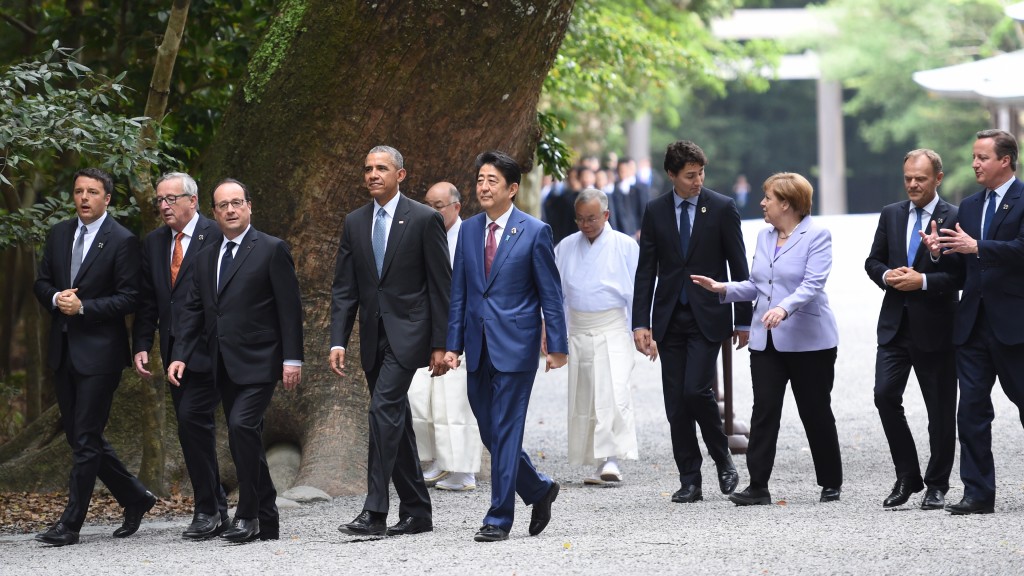
World leaders kick off two days of G7 talks in Japan on May 26 with the creaky global economy, terrorism, refugees, China’s controversial maritime claims, and a possible Brexit headlining their packed agenda. / AFP PHOTO /
ISE-SHIMA, Japan (AFP) — Japanese Prime Minister Shinzo Abe will Thursday take fellow world leaders on a tour of Ise Shrine, an ancient spot that sits at the heart of Japan’s native Shinto religion.
The trip is part of the cultural program on the sidelines of the Group of Seven summit, a two-day gathering that kicks off later Thursday.
Here are some things to know about Ise Shrine.
It’s old. But not really
The shrine is not one building, but many wooden structures, spread over a huge area amongst elegant Japanese gardens, and dates back more than 2,000 years.
However, in line with Shinto practice, the buildings themselves are taken down and reconstructed periodically. The main sanctuary and its torii gate — the pi-shaped structure that marks the entrance — were last rebuilt in 2013.
It’s the center of Shintoism
Shintoism is an animistic religion native to Japan, whose adherents believe everything — rocks, fire, trees, the sky — has its own spirit, or god.
It is highly ritualistic, and stresses cleanliness and order, but — unlike the Abrahamic religions of the West — has no all-seeing, judgmental deity.
The Japanese Emperor sits at the apex of the religion, and, until he was officially stripped of the status by American occupiers after World War II, was held to be divine.
Most Japanese people visit shrines during significant life events — at specific ages or during family illnesses — and ask for intercession from the gods. Many also visit Buddhist temples and see no contradiction with this pick-and-mix approach. Few would describe themselves as religious.
Ise is the source of the sun
The main sanctuary at Ise is dedicated to the sun goddess Amaterasu Omikami, who figures prominently in Japanese creation myths, and is arguably the most important among the panoply of gods in Shintoism.
Legend holds that after a furious argument with her brother, Amaterasu hid herself in a cave, depriving the earth of sunshine.
She was finally persuaded to come out — and let the world see again — with the use of a mirror, which believers say is still held at the shrine.
The inner sanctum of the shrine is hidden from the general public behind high wooden fences, away from prying eyes.
Only select people, including Japan’s royal couple and sitting prime minister, are allowed behind the main sanctuary’s walls.
It’s special to Shinzo Abe
The area, and the shrine, is popular with domestic tourists but not high on most foreign tourists’ to-do lists.
But Abe is a fervent follower of Shintoism and has said the area was chosen for the summit so leaders in the club of rich nations could “understand the spirituality of Japanese people”.
However, the shrine visit has attracted some controversy.
Critics point out that Shintoism meshes Japanese myth and history into a religion inextricably tied to nationalism — World War II was fought in the name of the emperor — and is not appropriate for a visit by world leaders.
The conservative Abe has regularly been criticized for downplaying Japan’s imperial aggression in the first half of the 20th century and trying to bolster his pacifist nation’s military.
nf/pb/hg/jah
© 1994-2016 Agence France-Presse







